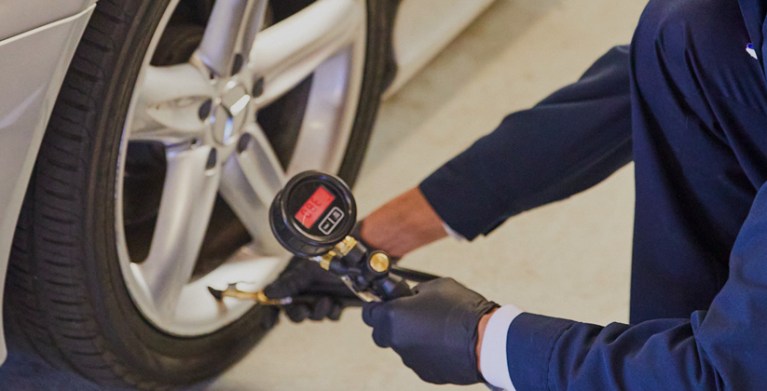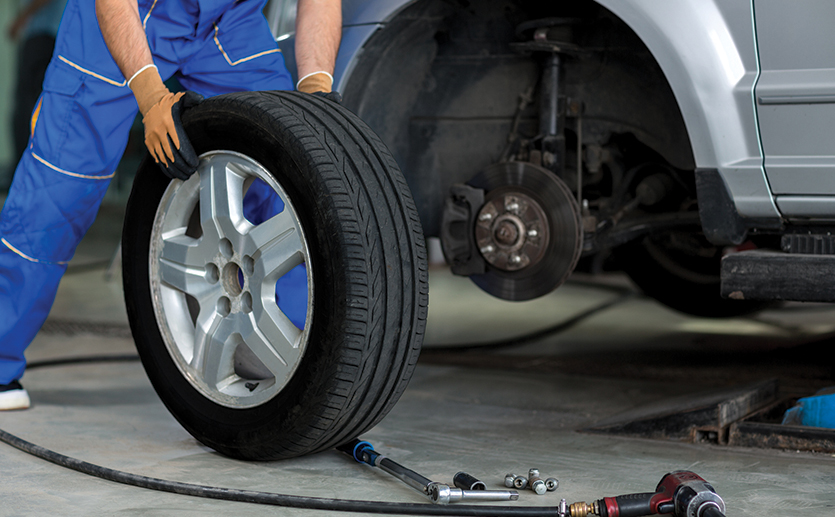Unlock Performance: Professional GMC Tire Service at Morris Tires
Unlock Performance: Professional GMC Tire Service at Morris Tires
Blog Article
Tire Service: The Effect of Weather Condition Conditions
When it involves ensuring ideal performance and security on the roadway, recognizing the effect of climate condition on tire service is important. From scorching warm to icy roadways, each climate component can substantially affect tire performance and total driving experience. By delving into the impacts of varying weather condition conditions on tires, drivers can get important understandings that might enhance their vehicle's efficiency and durability. In this conversation, we will certainly check out the elaborate partnership in between climate condition and tire solution, clarifying the importance of weather-specific tire maintenance methods and considerations.
Warmth and Tire Performance
When revealed to heats, tires experience adjustments in efficiency that can substantially affect lorry safety and security and handling. The warm created from extended driving or warm weather condition problems causes the tire rubber to soften, causing lowered step life and enhanced wear. As the rubber comes to be softer, the tire's hold when traveling lessens, affecting braking distances and total traction. In severe instances, too much warmth can also cause tire blowouts, positioning an extreme security risk to the automobile and its residents.

Winter Impacts
Cold weather condition problems can have a substantial influence on tire efficiency and safety and security. As temperature levels decrease, tire rubber can harden, resulting in decreased traction on icy or snow-covered roadways. In cool weather, tires may likewise lose air pressure a lot more rapidly, which can affect managing and gas effectiveness. Furthermore, cool temperature levels can cause tire sidewalls to stiffen, raising the danger of damage from gaps or various other roadway risks.
To minimize the effects of cold weather on tires, it is important to routinely inspect tire pressure and inflate them to the manufacturer's advised degrees. Utilizing winter season or all-season tires made for winter problems can additionally boost grip and grip on icy or snowy roadways. Appropriate tire maintenance, including normal evaluations for wear and damages, ends up being much more essential during cooler months to make certain optimum efficiency and safety.
Rainy Issues Influence
Tires with worn-out footsteps are extra vulnerable to hydroplaning, where a layer of water constructs up between the road and the tire surface area, leading to loss of grip. To battle this, motorists ought to consistently examine their tires for ample useful source walk deepness and take into consideration investing in tires specifically developed for damp problems.
In addition, rainy climate can also lower presence, making it testing for drivers to see the roadway ahead clearly (GMC Tire Service). In such conditions, it is crucial to change driving speeds appropriately and preserve a secure adhering to range to allow for abrupt stops. Correctly filled with air tires can additionally assist in keeping control on damp roadways by giving far better handling and grip
Snow and Tire Security
When driving in snowy conditions, having the appropriate tires can make a significant distinction in security and efficiency. Wintertime tires are designed with special rubber compounds and tread patterns to supply much better grip on page snow and ice compared to all-season tires.

It is essential to follow manufacturer guidelines when installing and using tire chains to stop damages to the tires and vehicle. By selecting the ideal tires, preserving proper rising cost of living, and thinking about additional traction aids like tire chains, chauffeurs can improve their security when navigating snow-covered roads.
Weather-Related Tire Upkeep
Weather-related tire maintenance incorporates a variety of methods aimed at ensuring optimal tire function and durability in different weather circumstances. One crucial facet of weather-related tire maintenance is tire stress law. Evaluating tire step frequently and replacing tires when walk wear reaches a specific deepness is important for preserving traction and stability in damaging weather.
Conclusion
In verdict, weather conditions have a significant effect on tire efficiency and security. From warm affecting tire pressure and use to chilly weather minimizing traction, it is essential to think about the weather condition when maintaining and making use of tires.
In this discussion, we will explore the complex relationship in between weather condition conditions and tire service, dropping light on the significance of weather-specific tire maintenance practices and considerations.

Report this page